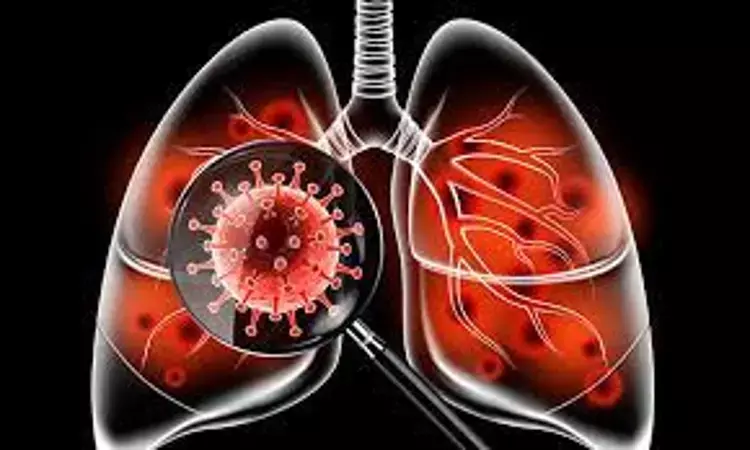- Home
- Medical news & Guidelines
- Anesthesiology
- Cardiology and CTVS
- Critical Care
- Dentistry
- Dermatology
- Diabetes and Endocrinology
- ENT
- Gastroenterology
- Medicine
- Nephrology
- Neurology
- Obstretics-Gynaecology
- Oncology
- Ophthalmology
- Orthopaedics
- Pediatrics-Neonatology
- Psychiatry
- Pulmonology
- Radiology
- Surgery
- Urology
- Laboratory Medicine
- Diet
- Nursing
- Paramedical
- Physiotherapy
- Health news
- Fact Check
- Bone Health Fact Check
- Brain Health Fact Check
- Cancer Related Fact Check
- Child Care Fact Check
- Dental and oral health fact check
- Diabetes and metabolic health fact check
- Diet and Nutrition Fact Check
- Eye and ENT Care Fact Check
- Fitness fact check
- Gut health fact check
- Heart health fact check
- Kidney health fact check
- Medical education fact check
- Men's health fact check
- Respiratory fact check
- Skin and hair care fact check
- Vaccine and Immunization fact check
- Women's health fact check
- AYUSH
- State News
- Andaman and Nicobar Islands
- Andhra Pradesh
- Arunachal Pradesh
- Assam
- Bihar
- Chandigarh
- Chattisgarh
- Dadra and Nagar Haveli
- Daman and Diu
- Delhi
- Goa
- Gujarat
- Haryana
- Himachal Pradesh
- Jammu & Kashmir
- Jharkhand
- Karnataka
- Kerala
- Ladakh
- Lakshadweep
- Madhya Pradesh
- Maharashtra
- Manipur
- Meghalaya
- Mizoram
- Nagaland
- Odisha
- Puducherry
- Punjab
- Rajasthan
- Sikkim
- Tamil Nadu
- Telangana
- Tripura
- Uttar Pradesh
- Uttrakhand
- West Bengal
- Medical Education
- Industry
Routine respiratory followup important in recovered COVID-19 pneumonia patients: Lancet

Over 100 million people over the world seem to have recovered from COVID-19 infection but concerns remain about long-term sequelae following acute infection. SARS resulted in significant effects on pulmonary function, chronic musculoskeletal pain, and long-term mental disorders in survivors. In this regard researchers explored the temporal trends in respiratory outcomes over 12 months in patients hospitalized for severe COVID-19.
The authors found that in most patients who recovered from severe COVID-19, dyspnea scores and exercise capacity improved over time; however, in a subgroup of patients at 12 months follow-up there was evidence of persistent physiological and radiographic changes. The findings of the study were published in The Lancet Respiratory Medicine journal.
In this prospective longitudinal cohort study, a total of 83 (61%) out of 135 eligible patients admitted to Renmin hospital,Wuhan,China for severe COVID-19 disease who did not require mechanical ventilation were prospectively followed up at 3,6,9 and 12 months post-discharge. Patients with diabetes, hypertension, previous cardiovascular disease, asthma ,COPD and history of smoking were excluded. During follow-up patients were examined and assessed for pulmonary function tests(DLCO,FVC,FEV1,residual volume, vital capacity, TLC),HRCT and 6-min walk test.
Key findings of the study are-
-There was a significant reduction in DLCO over the study period, with a median of 77% of predicted (IQR 67–87) at 3 months, 76% of predicted (68–90) at 6 months, and 88% of predicted (78–101) at 12 months after discharge.
-Multivariate logistic regression showed increasing odds of impaired DLCO associated with female sex (odds ratio 8•61 [95% CI 2•83–26•2]; p=0•0002) independent of age and peak HRCT scores.
-Researchers also found that median 6MWD test increased significantly, from 535 m (IQR 490–565) at 3 months to 585 m (552–626) at 6 months which was statistically significant(p<0•0001).
-The study noted a significant difference in pulmonary function test parameters (including DLCO, functional residual capacity, FVC, residual volume, total lung capacity, and vital capacity) between patients with normal versus abnormal HRCT follow-up scores at 12 months after discharge.
-Peak HRCT pneumonia score during hospitalisation was identified (OR 1•36 [95% CI 1•13–1•62; p=0•0009) as an independent risk factor of abnormal HRCT at 12 months after discharge(OR 1•36 [95% CI 1•13–1•62]; p=0•0009).
Although exercise capacity was found to be improving in most of the patients, reduction in gas transfer was observed in a third of patients. Low DLCO could be the consequence of interstitial abnormalities or pulmonary vascular abnormalities caused by COVID-19 infection.
At 12 months after discharge, 24% of patients had residual radiological changes that were consistent with evolving fibrosis with the presence of interstitial thickening and reticular opacity. None of the HRCT scans showed any development of definitive fibrosis nor progressive interstitial change.
The findings of the current study are consistent with previous reports of 6-months follow-up post discharge but this is the first study to report 12 month outcomes.
Authors conclude-" Our findings highlight the importance of respiratory follow-up of patients with COVID-19, and that further studies to mitigate the long-term consequences of COVID-19 pneumonia, including pulmonary rehabilitation interventions as well as novel therapeutic approaches, are required".
Source:The Lancet Respiratory medicine.
MBBS, M. D. Respiratory Medicine
Dr Sravan Kumar V, completed his M. B. B. S from SRMC, Nandyal and M. D. in Respiratory Medicine from the JSS Medical College, Mysore. After completing MD. he worked as Senior resident in Kasturba Hospital, Manipal. He is actively involved in various research activities of the department. Currently he is working as senior resident in Mallareddy medical college for women, Hyderabad. He can be contacted at editorial@medicaldialogues.in.
Dr Kamal Kant Kohli-MBBS, DTCD- a chest specialist with more than 30 years of practice and a flair for writing clinical articles, Dr Kamal Kant Kohli joined Medical Dialogues as a Chief Editor of Medical News. Besides writing articles, as an editor, he proofreads and verifies all the medical content published on Medical Dialogues including those coming from journals, studies,medical conferences,guidelines etc. Email: drkohli@medicaldialogues.in. Contact no. 011-43720751


